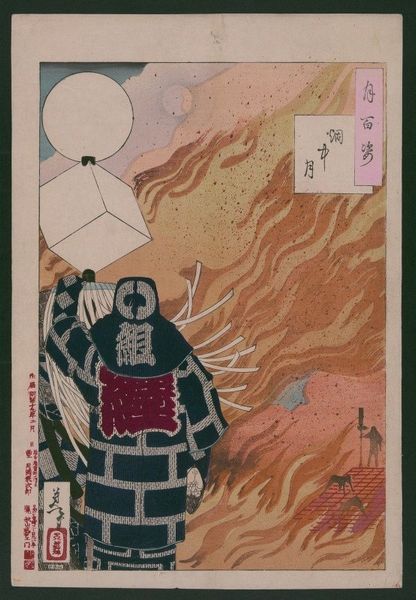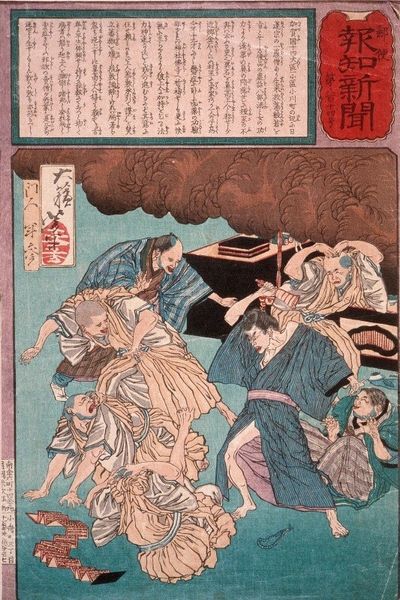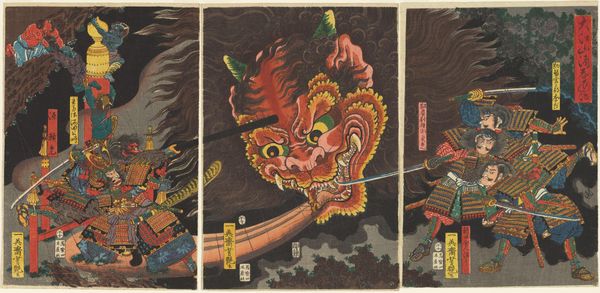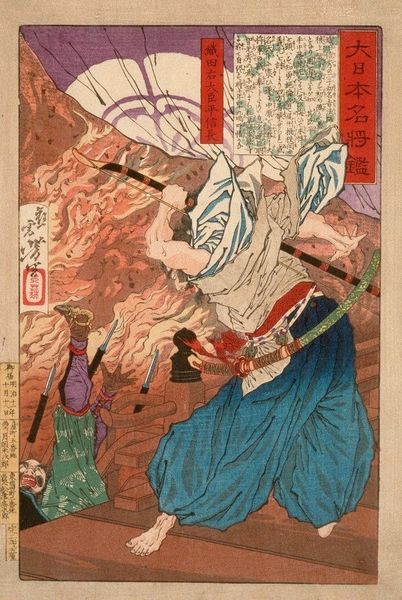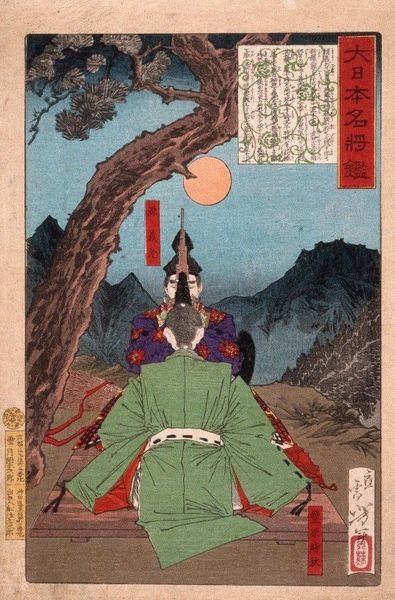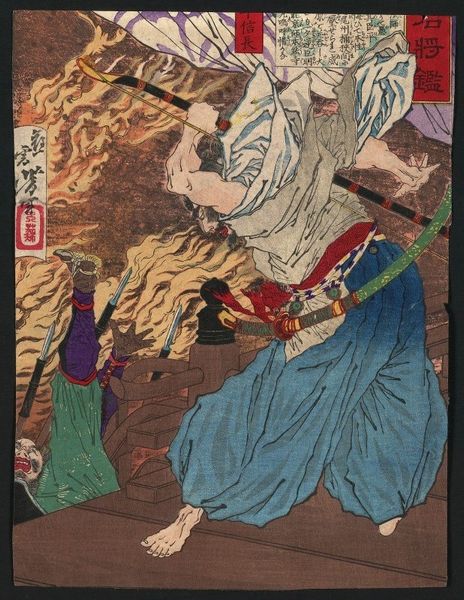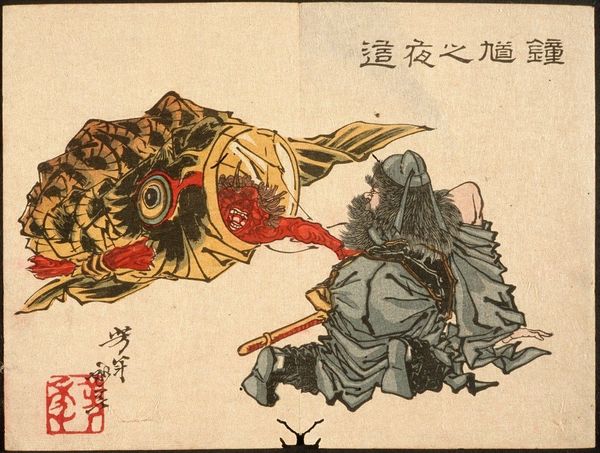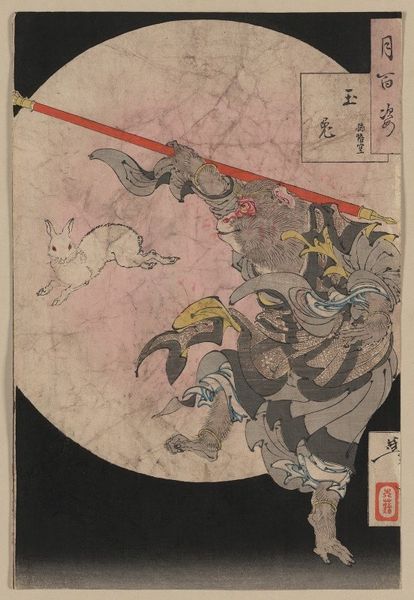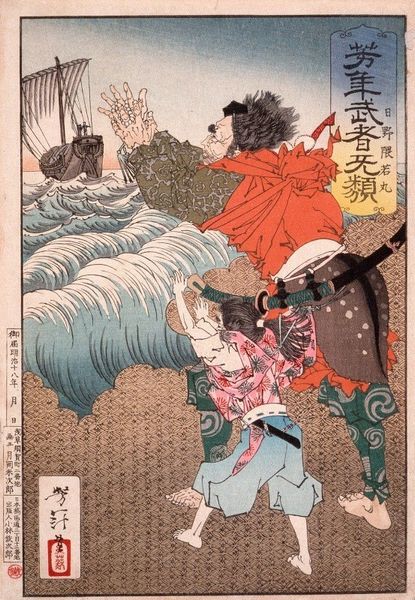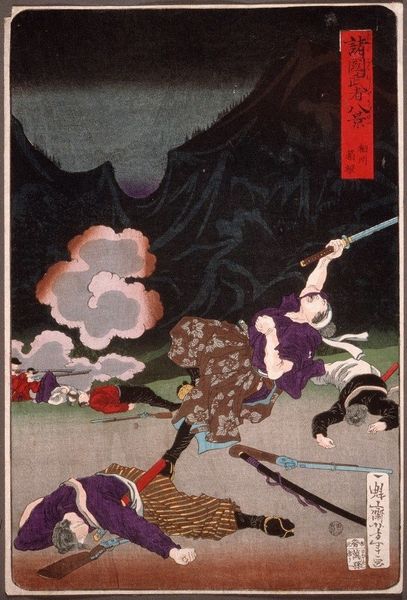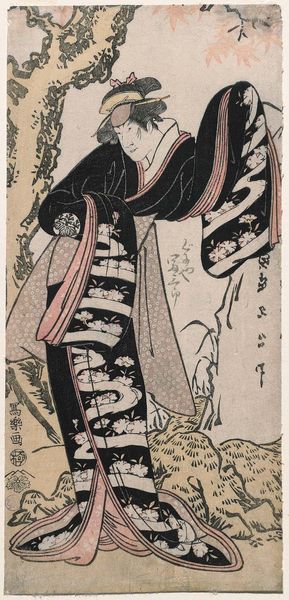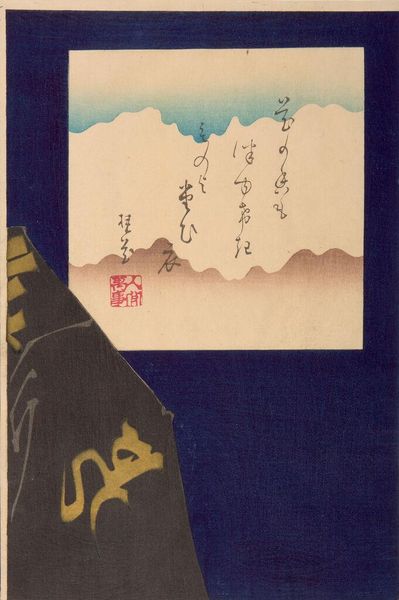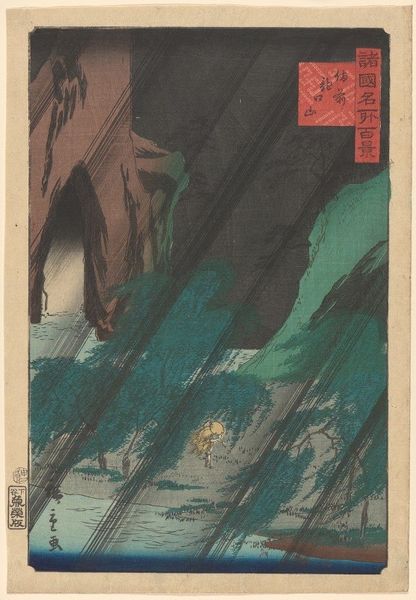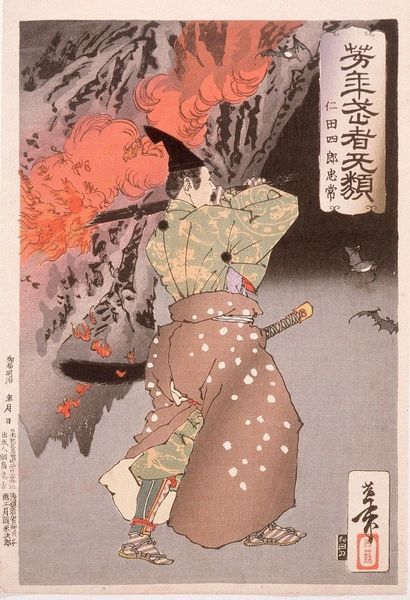
print, woodblock-print
#
portrait
#
narrative-art
# print
#
ukiyo-e
#
figuration
#
woodblock-print
#
line
#
history-painting
#
cartoon carciture
Copyright: Public domain
Editor: Here we have "Princess Saohime dies in her brother's castle", a woodblock print attributed to Tsukioka Yoshitoshi. It’s incredibly dramatic; what really jumps out at me is the sheer labor involved in producing something so detailed using this traditional printmaking method. What can you tell me about it? Curator: From a materialist perspective, Yoshitoshi’s work demonstrates a tension between traditional craftsmanship and modern modes of production impacting artmaking. Consider the paper itself, likely mass-produced yet painstakingly hand-carved and printed. It's Ukiyo-e, but the narrative pushes beyond the pleasure districts; have you thought about what might influence this? Editor: I guess with Ukiyo-e you normally see beautiful women, landscapes, actors… This scene feels different. It feels more aligned to history painting? Curator: Precisely! Yoshitoshi's foray into historical and sometimes gruesome events moves away from established subject matter in commercial prints. Who are the intended consumers and what were their tastes? Editor: Possibly, those from the samurai class who wished to revisit their historical roots? The print medium seems quite an effective means of reproducing art, and therefore history and memory at scale for consumption. Curator: Good. Thinking about labor, from sourcing pigments to distribution networks, expands our comprehension beyond the image itself, embedding its reception in societal relationships. It invites critical inquiry on consumerism’s impact too. Editor: This conversation made me think about not only the labor and craftsmanship needed to create such detailed artworks, but the consumption process. It's eye-opening. Curator: Likewise. The intersection of art, history and production yields some crucial understanding on socio-economic dynamics within art history.
Comments
No comments
Be the first to comment and join the conversation on the ultimate creative platform.
